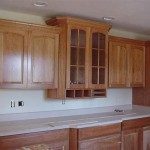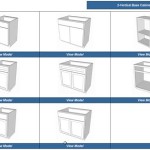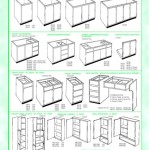How to Remove Stubborn Oil Stains From Kitchen Cabinets
Kitchen cabinets are a focal point in any home, and over time, they can accumulate stubborn oil stains from cooking splatters and spills. These stains can detract from the overall appearance of your kitchen and make it seem less clean and inviting. Thankfully, with the right approach and cleaning products, you can effectively remove these oil stains and restore your cabinets to their former glory.
Assessing the Stain and Choosing the Right Solution
Before you begin cleaning, it’s important to assess the severity of the oil stain. Fresh stains are generally easier to remove than older, ingrained stains. For fresh stains, a simple solution of soapy water may be sufficient. On the other hand, for older stains, you may need to use stronger cleaning agents and techniques.
Once you’ve assessed the stain, you can select the appropriate cleaning solution. Here are some common options:
- Dish soap and warm water: This is a good starting point for fresh oil stains. Simply mix a few drops of dish soap with warm water and apply it to the stain with a soft cloth or sponge. Gently rub the stain until it disappears, rinsing the area with clean water afterward.
- Baking soda paste: Baking soda is a natural abrasive that can help to lift stubborn stains. Create a paste by mixing baking soda with a small amount of water and apply it to the stain. Let it sit for a few minutes, then scrub gently with a soft-bristled brush. Rinse the area with clean water.
- White vinegar: White vinegar is a natural cleaner and deodorizer that can help to break down grease and oil. Apply white vinegar to the stain with a cloth and let it sit for a few minutes. Then, scrub the area with a soft-bristled brush and rinse with clean water.
- Commercial degreaser: For particularly stubborn stains, you may need to use a commercial degreaser. Choose a degreaser specifically designed for kitchen use and follow the manufacturer’s instructions carefully. Apply the degreaser to the stain with a cloth or sponge, scrubbing gently. Rinse the area thoroughly with clean water afterward.
Proper Cleaning Techniques for Optimal Results
Once you’ve chosen a cleaning solution, it’s important to use the right techniques to ensure effective stain removal. Here are some key steps:
- Prepare the area: Clear any clutter or items from around the cabinet door or drawer you're cleaning. This ensures the cleaning process is safe and efficient.
- Apply the cleaning solution: Apply the chosen cleaning solution to the stained area, being careful not to saturate the surrounding wood. Use a soft cloth or sponge to spread the solution evenly.
- Scrub gently: Use a soft-bristled brush, cloth, or sponge to scrub the stain gently. Avoid pressing too hard, as this can damage the cabinet’s finish. For stubborn stains, you may need to scrub for a few minutes. It is important to work in a circular motion and avoid causing streaks.
- Rinse thoroughly: Once you’ve removed the stain, rinse the area thoroughly with clean water. Use a soft cloth to wipe away any remaining cleaning solution and residue.
- Dry the surface: Once rinsed, dry the cabinet door or drawer with a clean, dry cloth or paper towel. Ensure that no water remains on the surface, as this can cause damage to the wood over time.
Prevention is Key: Maintaining a Clean Kitchen
While it may be necessary to deal with oil stains occasionally, prevention is the best strategy. Regularly cleaning your kitchen can significantly diminish the likelihood of stubborn oil stains from forming. By following these preventative measures, you can keep your kitchen cabinets looking their best and maintain a cleaner, more hygienic environment:
- Wipe up spills immediately: Don’t let oil spills sit on your cabinets for extended periods. As soon as a spill occurs, wipe it up with a damp cloth or paper towel to prevent it from seeping into the wood.
- Use a splatter guard: When cooking, utilize a splatter guard to protect your cabinets from oil splatters. A splatter guard can be made of various materials, such as metal or glass, and can be placed over your cookware while cooking.
- Clean your stovetop regularly: A messy stovetop can easily lead to oil splatters on your cabinets. Regularly clean your stovetop, burners, and range hood to prevent grease buildup and minimize the risk of oil stains.
- Consider a protective finish: If your cabinets have a sealed finish, consider applying a protective sealant every few months. A sealant can help to prevent oil and other stains from penetrating the wood. It can also help to protect the wood from scratches and wear and tear.
By combining the right cleaning solutions, proper techniques, and preventative measures, you can effectively remove stubborn oil stains from your kitchen cabinets and keep them looking clean and beautiful for years to come.

How To Clean Sticky Grease Off Kitchen Cabinets Ovenclean

Get Grease Off Kitchen Cabinets Easy And Naturally

How To Clean Kitchen Cabinets Everyday Skate

Best Ways To Clean Grease Stains Off Kitchen Cabinets

How To Clean Sticky Grease Off Kitchen Cabinets
:max_bytes(150000):strip_icc()/ways-to-clean-wood-kitchen-cabinets-3017289-01-765f893e7cca49a1ab72d7c49efdf518.jpg?strip=all)
Tips For Cleaning Food Grease From Wood Cabinets

How To Clean Grease From Kitchen Cabinets Trends Wood Finishing

How To Clean Stubborn Kitchen Oil Stains Easily Bsolute Cleaning

How To Remove Oil Grease Stains From Kitchen Backlashes Cabinets

How To Remove Grease From Kitchen Cabinets 3 Methods Bob Vila
Related Posts








